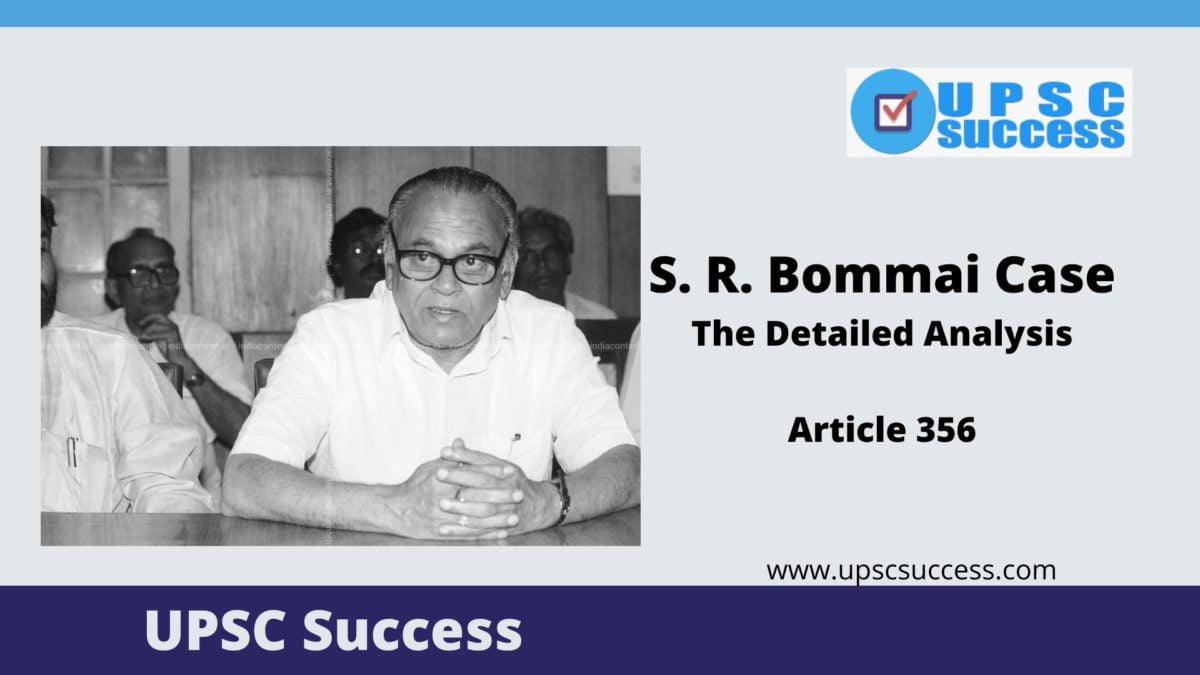Who was S. R. Bommai?
S. R. Bommai was the Chief Minister of the Janata Dal government in Karnataka between August 13, 1988, and April 21, 1989.
What was the background of his case?
His government was dismissed on April 21, 1989, under Article 356 of the Constitution and President’s Rule was imposed, in what was then a most common mode to keep Opposition parties at bay.
The dismissal was on grounds that the Bommai government had lost the majority following large-scale defections engineered by several party leaders of the day.
Then-Governor P. Venkatasubbaiah refused to give Bommai an opportunity to test his majority in the Assembly despite the latter presenting him with a copy of the resolution passed by the Janata Dal Legislature Party.
What happened then?
Shri Bommai went to court against the Governor’s decision to recommend President’s Rule.
First, he moved the Karnataka High Court, which dismissed his writ petition. Then he moved the Supreme Court.
What did the Supreme Court do?
The case, which would go on to become one of the most cited whenever hung Assemblies were returned, and parties scrambled for a government, took almost five years to see a logical conclusion.
On March 11, 1994, a nine-judge Constitution Bench of the Supreme Court issued the historic order, which in a way put an end to the arbitrary dismissal of State governments under Article 356 by spelling out restrictions.
What did the judgement say?
The verdict concluded that the power of the President to dismiss a State government is not absolute.
The verdict said the President should exercise the power only after his proclamation (imposing his/her rule) is approved by both Houses of Parliament. Till then, the Court said, the President can only suspend the Legislative Assembly by suspending the provisions of Constitution relating to the Legislative Assembly.
“The dissolution of Legislative Assembly is not a matter of course. It should be resorted to only where it is found necessary for achieving the purposes of the Proclamation,” the Court said.
What happens if the Presidential proclamation is not approved by the Parliament?
“In case both Houses of Parliament disapprove or do not approve the Proclamation, the Proclamation lapses at the end of the two-month period. In such a case, the government which was dismissed revives. The Legislative Assembly, which may have been kept in suspended animation gets reactivated,” the Court said.
Also the Court made it amply clear that a Presidential Proclamation under Article 356 is subject to judicial review.
What is the significance of the S. R. Bommai vs. Union of India case?
The case put an end to the arbitrary dismissal of State governments by a hostile Central government.
And the verdict also categorically ruled that the floor of the Assembly is the only forum that should test the majority of the government of the day, and not the subjective opinion of the Governor, who is often referred to as the agent of the Central government.
“The Chief Minister of every state who has to discharge his constitutional functions will be in perpetual fear of the axe of Proclamation falling on him because he will not be sure whether he will remain in power or not and consequently he has to stand up every time from his seat without properly discharging his constitutional obligations and achieving the desired target in the interest of the State,” the Court said.
What was the verdict’s impact first seen and how it is cited later?
In one of the first instances of the impact of the case, the A.B. Vajpayee government in 1999 was forced to reinstate the Rabri Devi government it dismissed when it became clear that it would suffer a defeat in the Rajya Sabha over the issue.
And later, whenever the case of a hung Assembly, and the subsequent exercise of government formation, came up, the Bommai case would be cited, making it one of the most quoted historical verdicts in the political history of India.
Who called Article 356 is a death letter?
Bhimrao Ambedkar, chairman of the Drafting Committee of the Constitution of India, referred to Article 356 as a dead letter of the Constitution. In the constituent assembly debate it was suggested that Article 356 is liable to be abused for political gains.

